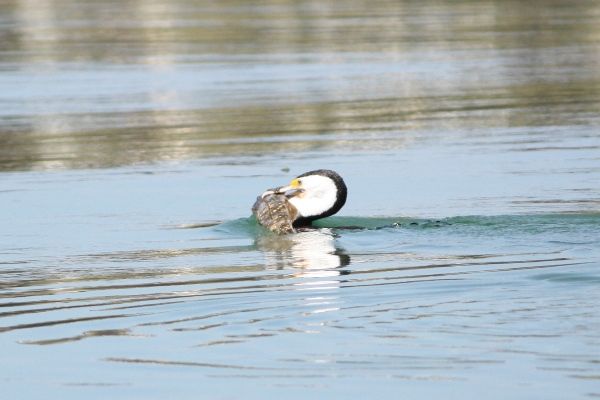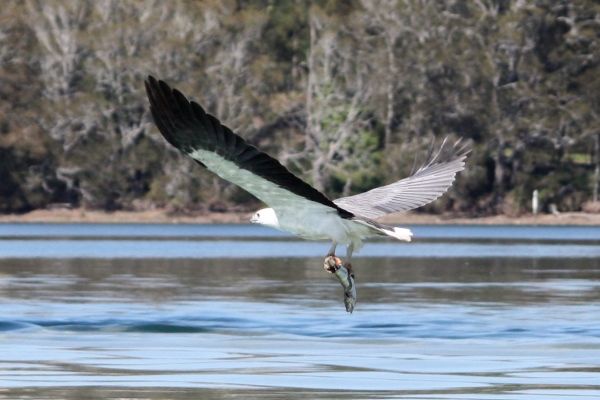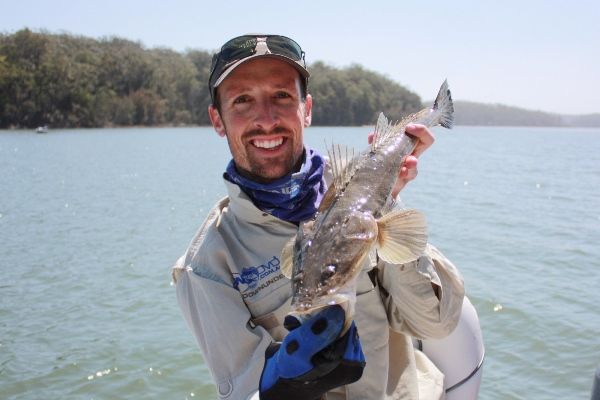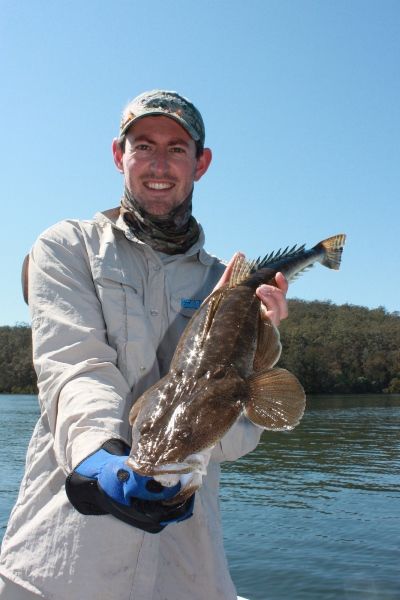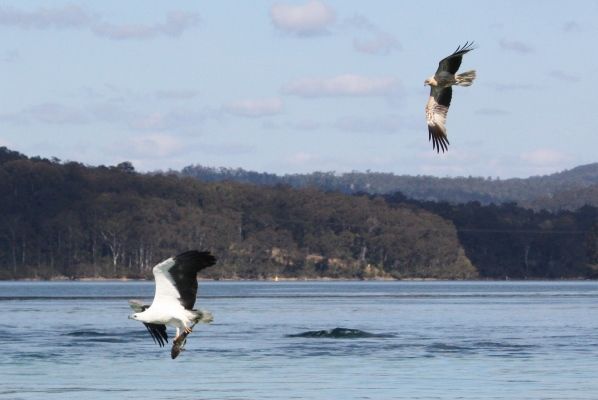Latest News
Hunting the great hunter – catching dusky flathead
Wednesday, 15 October 2014
Perfectly camouflaged and lightly covered in sand, it is virtually invisible. It lies waiting, watching with eyes on the top of its head.
An unsuspecting mullet swims pass. With a puff of sand the buried fish explodes off the bottom, its long and powerful tail propelling it towards the hapless mullet. It opens its cavernous mouth and swallows the fleeing fish whole, small sharp teeth on the top and bottom jaws preventing escape. With its meal now secured it returns to the bottom and nestles down into the sand once again. This fish is the dusky flathead, one of the great hunters of salt water rivers, estuaries and beaches.
But does this perfectly adapted hunter ever become the hunted? While floating around Wagonga inlet at Narooma recently, I discovered I wasn’t the only one fishing for a ‘flattie’. A cormorant landed near the boat, ducked under the water and emerged with a nice sized fish. The fish was clearly too big for it to swallow, so the cormorant swam around for a few moments, presumably posing for a photo. Then a sea eagle took off from a nearby tree to investigate. As the eagle bore down, it was joined by another bird of prey: a kite. The cormorant dropped the fish and ducked underneath the water to escape the raid. The eagle grabbed the fish in a single claw and flew back to its tree for lunch. It’s a dog-eat-dog – well, eagle-eat-fish – world out there.
Of course if grabbing a flathead with your mouth or bare hands isn’t for you, there are alternatives. You could fish with a piece of bait and a hook, but if you’re looking for the perfect introduction to lure fishing you might like to try fishing for flathead with soft plastics.
As mentioned, dusky flathead live on the sandy or muddy floor of saltwater systems and ambush their prey as it swims past. Keep casting into new water and ensure the lure hits the bottom regularly. The first tip is to fan your casts out from left to right and after a few casts, move twenty or thirty metres down the bank and cast out again. In a boat, let the wind or current push you along and cast out in front of the drift.
The second tip is to ensure you have the correct weight of jig head on the lure. Too light and the lure may get caught in the current or wind and rarely hit the bottom. Too heavy and a flathead may not have time to swallow the lure – flathead will usually grab a lure as it sinks and a heavy weight will leave it falling too fast. In deep or tidal systems like the Clyde River or Wagonga inlet, I would suggest 1/6 or 1/4 oz weights, while in the shallower lakes like Durras or much of Tuross 1/8 or 1/6 oz should suffice. Hook sizes are generally 2/0 and 3/0.
Try soft plastics that look like a bait fish, 60-80mm in length, in bright but natural colours such as silver, gold, or white. Cast the lure out as far as you can and wait until it hits the bottom – you’ll know because the line, which is taught when the lure is falling, will suddenly relax. Lift the rod from horizontal to 11 o’clock to swim the lure off the bottom, then wind in slack line as you drop the rod back to horizontal. Wait for the lure to hit the bottom again and repeat. Aim for the lure to take roughly three seconds to reach the bottom after each lift, changing the weight as necessary. Armed with a few soft plastics and a couple of different weights of jig heads, you’ll soon perfect a strategy, like the cormorants and eagles, to hunt the great hunters of the saltwater.
Graham Fifield
www.flickandflyjournal.com
Tags Graham Fifield flathead

